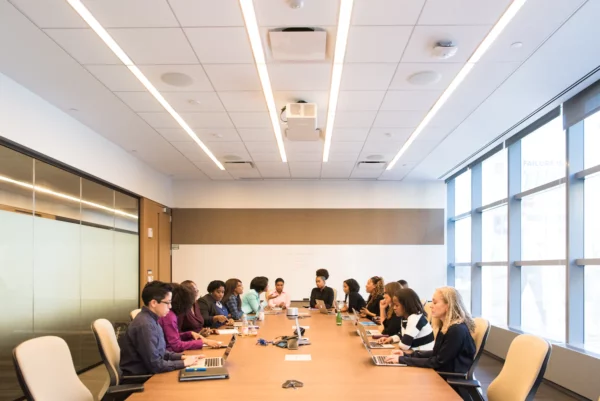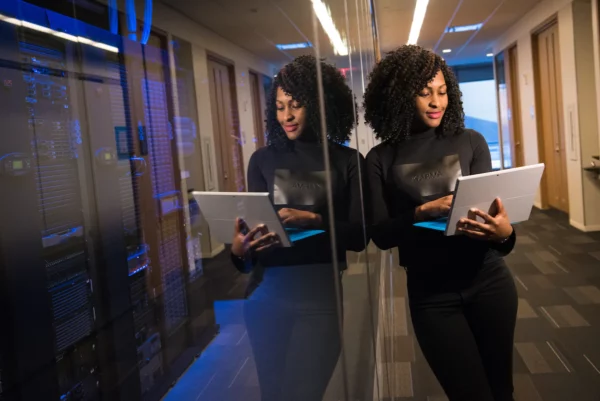
Coming back to work after the holiday period can be jarring – switching out the hammock and mimosa for an office chair and an 8-hour work day takes some getting used to, for everyone.
Naturally, this often results in a more disconnected team as everybody works to feel comfortable in routine and regular programming again.
Creating a connected environment at work has a significant impact on employee satisfaction, and can make the transition from holiday mode, back to work, much more seamless and favourable for overall productivity
HR professionals tell us there are many processes we can put in place to cultivate a connected environment at work. To name a few, fostering a culture of recognition and collaboration and organising regular social events are just some of the ways employee well-being can thrive.
Let’s take a closer look at just what exactly a connected workplace looks like, the benefits it can provide, and the ways in which in-house HR professionals or an outsourced hr team can cultivate a more connected workplace after the holiday period.
What Does a Connected Team & Workplace Look Like?
A connected team at work is one where employees feel a strong sense of togetherness and collaboration with their colleagues and upper management. Employees are valued for their skills, and supported in their endeavours. A connected team also has a healthy work-life balance. Team members take regular breaks, disconnect from work when they’re not at work, allowing them to stay energised and refreshed.
In a connected workplace, employees (both remote and in-office) are able to access all business services in one centralised platform. This allows employees to access all components necessary for work, communicate with each other effectively and share documents/services between each other seamlessly.
How to Reconnect a Team After the Holiday Period

Having a plan in place for reintegration back into the workplace after the holiday period will get the whole team back on track faster and feeling more comfortable at work.
1. Encourage internal social interaction and networking
Frequent internal social interaction increases team cohesion and job satisfaction, allowing team members to build stronger relationships and become more comfortable in collaborating with each other. This is crucial right after the holiday period, where people have spent a lot of time socialising with friends and family, enabling a smooth transition back into the office environment.
2. Set goals and expectations
Clearly communicating the goals and expectations for the upcoming period makes sure that everyone knows their roles and responsibilities for the weeks ahead and allows everyone to get started on planning their days without ambiguity. When everyone knows what is expected of them, they’re more likely to be engaged and motivated to get cracking. Accountability ensures that all employees are aware of their responsibilities and can contribute to the company’s success.
3. Prioritise employee well-being
Getting back into a daily routine takes time, and it’s important that mental and physical wellbeing is prioritised in order to prepare everyone for the months ahead. Allow, if possible, for a slow speed-up back into the regular swing of things so that the next sea of emails that come through aren’t a horrifyingly daunting endeavour. Employee wellbeing is critical to how they feel about work, how they perform and grow within your environment.
4. Offer training opportunities
Offering training or development opportunities to help your team grow and build their skills benefits employee happiness and engagement. When employees feel their company is investing in the development, they’re more likely to engage with tasks and stay at the company in the long term. Coming back after the holiday period into an environment where you’re able to put aside time to learn and build skills enables an easy transition back into regular programming and ensures job satisfaction stays high.
5. Schedule regular check-ins
Regular check-ins between management and team leaders and their team allows members to discuss their progress and address any concerns, ensuring that employees feel heard and valued as a person. Use this time to discuss anything non-work related too – it’s important that colleagues feel like friends, given you’re all spending so much time together!
5 Ways to Create a More Connected Workplace Environment From A HR Pro

While we’re on the topic of connecting teams, let’s discuss how you as an HR professional can create a more collaborative and productive workplace environment that keeps morale high.
If you’re an in-house or outsourced HR professional tasked with building company culture and improving collaboration in the workplace, here are 12 actions you can take to build a healthier, more efficient and successful working environment..
1. Use of programs internally that support collaborative work
The use of collaborative programs internally allows employees to easily share information, communicate and work together in real-time. The ability to share and work together seamlessly leads to efficient work, and better outcomes for the organisation. Moreover, programs such as Google Suite use industry-standard security measures that ensures business information is protected, and offers one centralised location to access and store documents.
2. Encourage a culture of learning
When employees are free to share ideas and communicate without repercussions, the company itself benefits from new and innovative solutions to problems. Encouraging employees to take ownership of their own learning and development gives a sense of agency and showcases a level of trust from upper management, leading to a more self-inspired employee base and a higher quality of work upon upskilling.
3. Recognise employee achievements and encourage regular feedback
Recognising achievements and cultivating a dynamic of regular feedback between employees and management leads to greater accountability for all and an improved capacity for innovation. Recognising achievements, big or small, encourages all to work to the best of their ability and strive for success, where regular feedback enables the realisation of achievement. Seriously, give it a go – you’ll find that clients will love the work they’re getting!
4. Create a clear line of progression in the company
Creating a clear line of progression for employees at the most junior levels to the top creates a dynamic of trust in one’s ability, and allows people to see that they can achieve their aspirations with the company as they deliver value. This cultivates a dynamic where everyone works together and strives to be the best version of themselves possible. A knock-on effect of this is an easier succession planning process in the event that someone takes a new opportunity elsewhere, because the best talent to replace lies within!
Connection In the Workplace
So, there you have it – it’s easy to see how a connected, collaborative workplace results in improved work, job satisfaction and a heightened possibility of success. As HR professionals, it’s important that we listen to the needs of our colleagues and equip them with the programs and skills needed to facilitate comfortability at work and progression. By enacting the suggestions above, your team will feel more at home in the workplace and be able to achieve not only their personal aspirations, but work together to realise company goals.
